In this post we discuss why your lead shoulder hurts when you play golf and what you can do to resolve the issue.
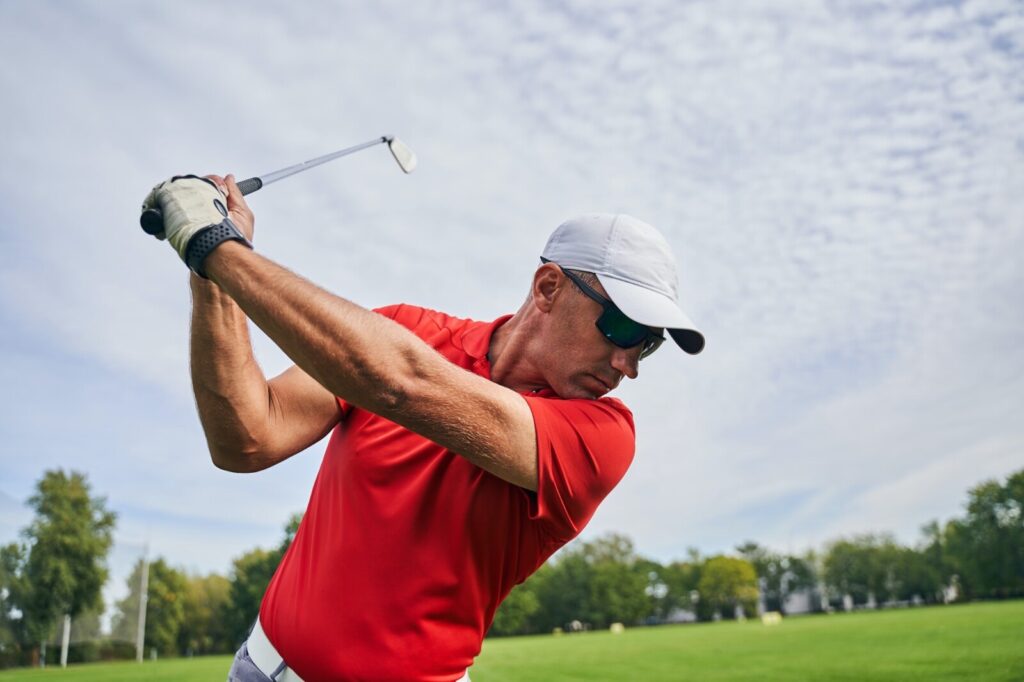
At a glance
Lead shoulder pain in golfers often comes from:
Using the upper body to generate power instead of the legs, hips, and trunk, which overloads the shoulder.
Limited mobility in the hips or trunk, forcing the shoulder to compensate.
Muscle imbalances like weakness or tightness around the shoulder.
What to do:
Improve your swing technique by generating power from your lower body.
Work on hip and trunk mobility to enable smoother movement.
Strengthen your shoulder muscles, especially those around the rotator cuff, for better stability.
Introduction
If you’re experiencing pain or discomfort in your lead shoulder when you play golf, you’re not alone.
Among professional golfers the shoulder is the third most commonly injured area behind the lower back and the wrist/hand. In amateurs it’s second only to the lower back.
90% of shoulder injuries will occur in the lead shoulder. This is related to both the extreme range of motion required to achieve the back swing position and the forces encountered at ball strike.
Swinging a long club with a straight arm produces a huge moment arm to the lead shoulder. This together with the speed at which it’s done, results in the shoulder having to tolerate large peaks in force.
Try swinging a club backwards and forwards with one arm (preferably not the one that hurts) to see what I mean.
And this is without the additional forces that are transmitted up the club should you hit the ground.
Golf swing technique issues can lead to shoulder problems
Amateur golfers in particular may find their technique to be a contributing factor to shoulder problems.
Whilst I’m not a golf coach, I do consult with coaches when my clients are experiencing issues.
The most common flaw in technique that’s associated with shoulder issues is attempting to generate power with the upper body.
Studies show leg, hip and trunk strength are most closely related to performance in the golf swing.
The smaller muscles of the upper body should only be responsible for transferring that power to the ball, rather than generating it themselves.
Attempting to do this can lead to overload at the lead shoulder.
Restrictions at the hip and trunk can cause lead shoulder issues
Whilst I’ve seen studies that show limitations at the hip can lead to back pain in golfers, I’ve not seen any studies that show a similar relationship with shoulder issues. This has however been demonstrated in baseball pitchers and is something I see anecdotally.
It makes sense that a lack of backswing, which can be due to limitations at the trail hip or the trunk, require the lead shoulder to move through a greater range of motion to achieve the horizontal arm position.
Over time this can lead to shoulder problems.
Muscles involved in lead shoulder issues
In order to achieve optimal shoulder turn at the top of the back swing, the lead shoulder moves into protraction, horizontal adduction and internal rotation.
This allows your arm to move across your body and places a stretch on the muscles that oppose this motion. Namely those that attach the scapula (shoulder blade) to the spine. These include the rhomboids (1) and the trapezius (2).
And those that run from the scapula itself to the humerus (upper arm). These include infraspinatus (3) teres minor (4) and the posterior fibres of the deltoid (5).
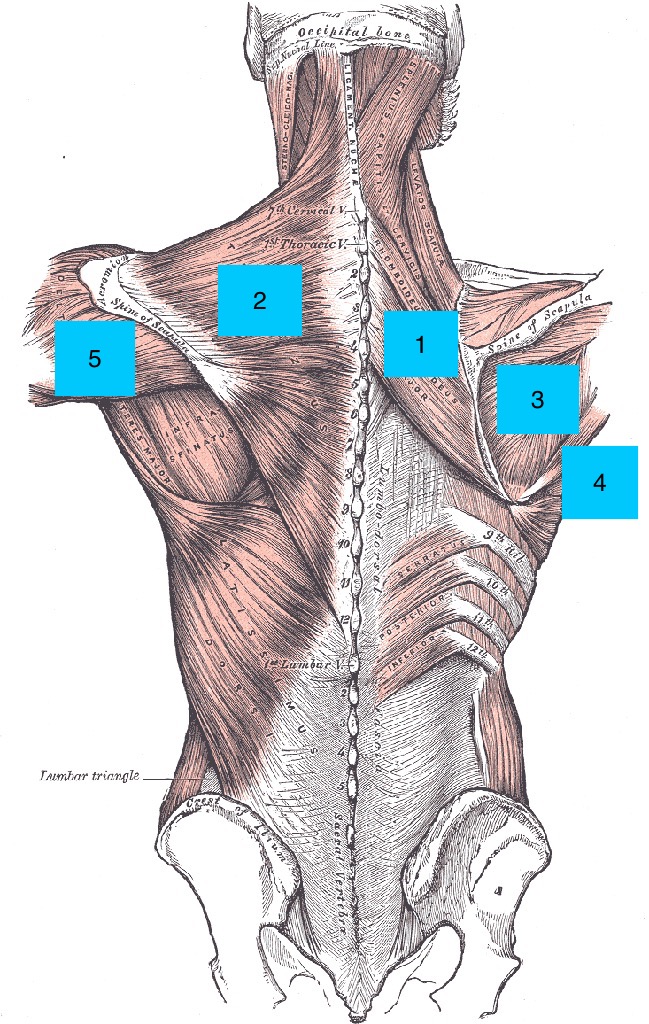
In theory this brief stretch loads these muscles to prepare them for the explosive movement of the downswing.
At ball strike and early follow through the infraspinatus is the most active muscle in the lead shoulder.
It’s also the muscle that seems particularly affected when lead shoulder issues appear.
How to resolve lead shoulder issues in the golf swing
Once you’re confident that neither your swing, or limitations at your trunk or your hips are contributing to your shoulder problem, it’s time to look at the shoulder itself.
Whilst every situation will be slightly different, the following two checks and subsequent exercises are worth carrying out if you’re experiencing lead shoulder issues.
External shoulder rotation check
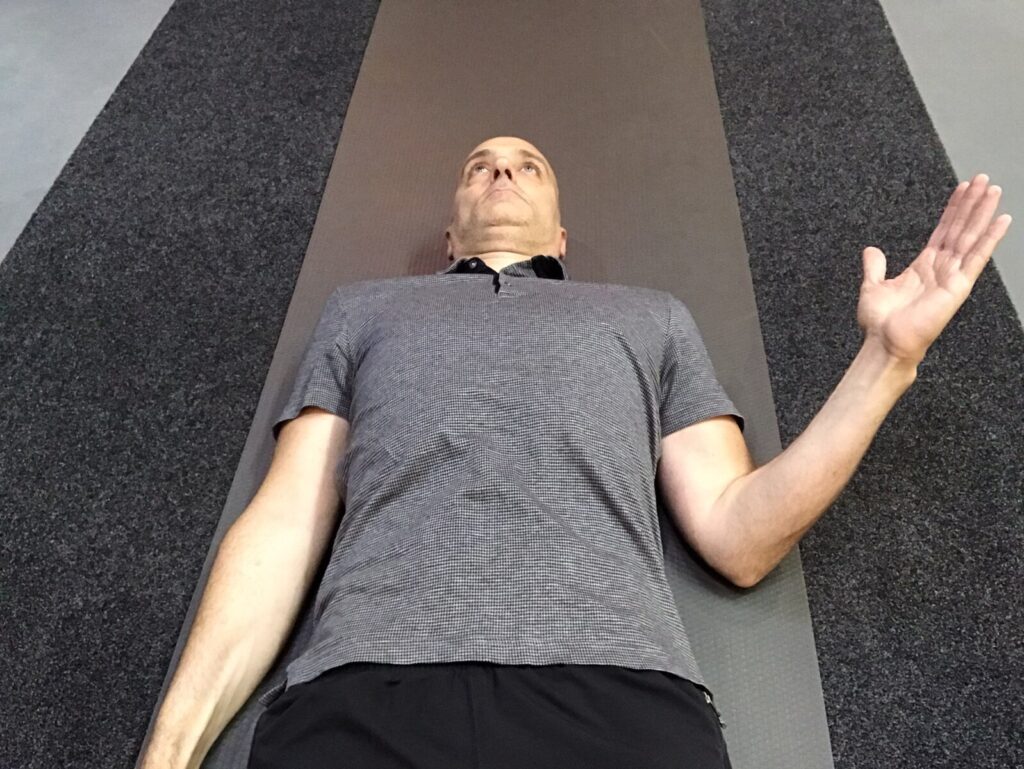
Slowly externally rotate your lead shoulder so the back of your hand moves towards the floor.
See where the shoulder naturally stops and compare it to the other side. Don’t force the motion or push through pain.
External shoulder rotation isometric

If you see the motion is limited, use your other hand to brace below the wrist of your limited side.
Keep your shoulder blade on the floor and gently push out into your other hand. Hold for 6 seconds and repeat 6 times.
Shoulder abduction check
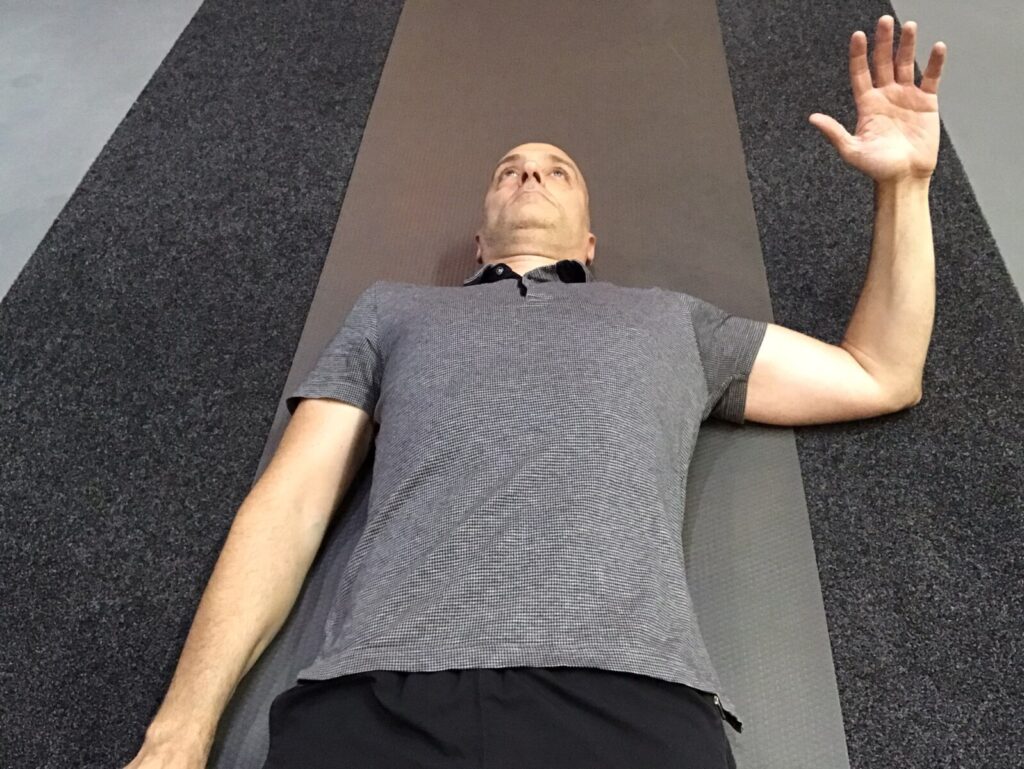
Now slowly slide your lead arm out to the side. Check you can comfortably get to around 80 degrees of abduction without discomfort or your shoulder moving up towards your ear.
Shoulder abduction isometric
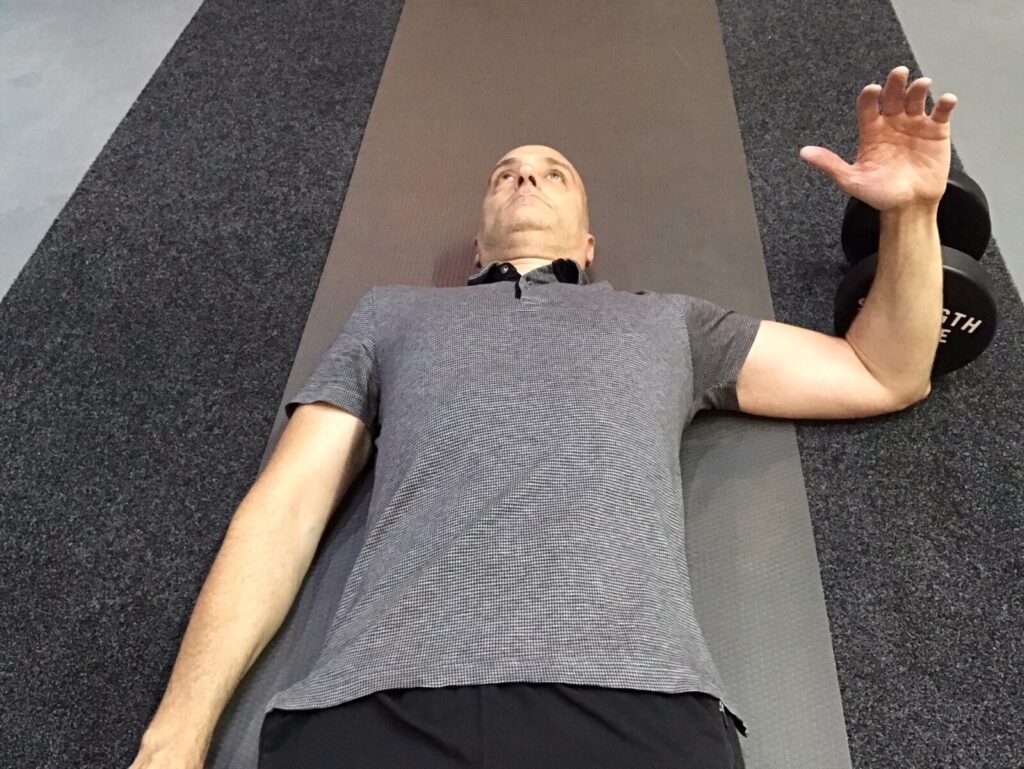
If you see the motion is limited, place an immovable object on the outside of your upper arm and gently push into it. Again hold for 6 seconds and repeat 6 times.
Summary
Issues at the lead shoulder in the golf swing can occur as a result of faults in technique and limitations at the hip or trunk.
Focus on addressing these issues whilst restoring strength to your shoulder.
This multi joint approach should have you back on the course and enjoying your golf once again.